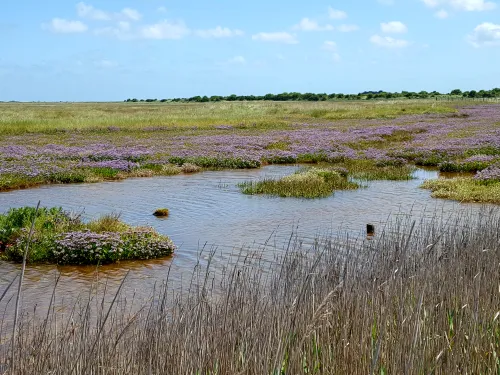
What my Kent Wildlife Trust membership means to me
Teacher, campaigner, and member Kerry Sabin-Dawson talks all about her membership journey in this blog.


The project I am undertaking as part of the CEIP in partnership with The Crown Estate will take the form of a “Review of the Evidence on Environmental Impacts of Tidal Stream Renewable Energy in the UK”.
This will involve collating the current evidence (and gaps) from various sources. Additionally, I’ll be reviewing the existing strategies on impact risk retirement and risk management within tidal stream, as well as the appropriate use and feasibility of data transferability across sectors. I am learning so much about a completely new sector: renewables, especially marine energy and tidal stream. I have had access to many opportunities to develop further through a number of workshops including Presentation Skills, Networking, and Insights Training. I have recently made contact with Vattenfall – CEIP partners - who will be extremely useful in my project, giving me the opportunity to engage with a developer stakeholder and get some understanding of their work and point of view.
Environmental Impact Assessments are completed during the planning process prior to granting permission to build an offshore wind farm. This is to identify potential positive and negative impacts on the environment. In addition, a range of monitoring is usually undertaken during construction, and once the wind farm is built, so that the predicted impacts can be checked and reported on.
An example of this can be seen at Vattenfall’s Thanet Offshore Wind Farm near Ramsgate, where monitoring of the seabed (benthic monitoring) has been completed over a number of years since the wind farm became operational. It has been found that the seabed community has changed slightly over time, with an increase in individual species. This change has happened both within the wind farm area and also at reference points outside the wind farm, suggesting the change is not due to the wind farm itself. It is often not possible to put the change down to a single factor. It could have been due to an increase or decrease in predators, food availability and storm frequencies. Natural changes, such as bottom water temperature, bottom water salinity and tidal stress and sediment deposition rates could have also been a factor.
Vattenfall will complete a third year of benthic surveys later in 2022, following which, further analysis on any patterns of seabed composition and other metrics can be investigated further to determine if any long term trends can be identified. Additional information around Vattenfall and the work they do in Kent can be found on their website here: www.vattenfall.co.uk/vattenfallinkent

My goal will be to find fun and educational activities to help primary schools and communities around the Kent coast invest in their local marine environment. I am aiming to raise awareness not only about the amazing biodiversity that exists on the shores, but also about the value of teaching programmes and renewable energies (such as offshore windfarms) in the fight against the climate and nature crises.
After working on this project for almost 2 months now, I can say that I have never learned so much in so little time! Partnering with different organisations that work in the marine sector has been an amazing way to have a more global view of the threats faced by the marine environment and what efforts are being made to face them. I believe I will still be learning a lot throughout this internship and I hope I can share some of that learning with as many people as possible!


Teacher, campaigner, and member Kerry Sabin-Dawson talks all about her membership journey in this blog.

Natasha Ruskin explores something terrifying: a world without woodlands.

Ever wondered how planting trees or restoring soil can help fight climate change? Carbon sequestration is nature’s quiet housekeeping - learn more in this blog.